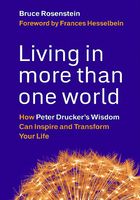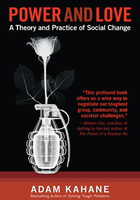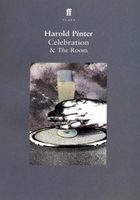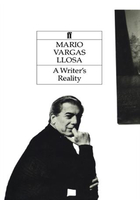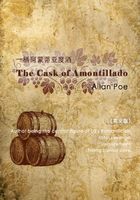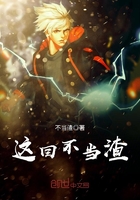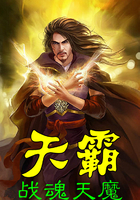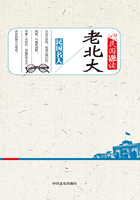THEN TO NOW—ONLY 61 YEARS. THEN TO NOW—THE QUINTESSENTIAL AMERICAN BOOMTOWN TO THE QUEEN CITY OF A NEW MILLENNIUM.
Then to Now—an ever-growing topography that renders street scenes from Then nearly unidentifiable Now. Sixty-one years of history, from the moment the first flashbulb popped to the moment that I write these words. My city—unrecognizable Now, longed for as it was Then. And the police agency that has provided these photographs—immutable in its resistance to change, a motor of change, a chronicler of change depicted in jailhouse mugshots and crime scene pix.
It is commonly held that cities get the police department that they deserve. Los Angeles proves the case true. L.A. has always been about expansion. The Los Angeles Police Department has always been about imposing constraints on an unruly town infused with a sense of its limitless potential. Thus, America's most provocative city earned America's most provocative police agency. L.A. is the most overscrutinized and over-analyzed city in the United States, and the LAPD keeps pace as the most overscrutinized and overanalyzed police department. Both stand as urban cultural phenomena—and both tell us this:
Urban planning is futile. Great cities have unstoppable wills of their own. Their greatness, their boldness, their beauty magnetizes a disproportionate array of fiends bent on plunder. Crime, et al., cannot be eradicated. Crime can be interdicted and occasionally subsumed—but only on an ad hoc basis.
Hence the photographs in this book.
They portray trouble in paradise.
Great cities resist containment. Urban planning is futile. Crime, et al., cannot be eradicated. Plunder must run its course. Now, the flashbulbs pop! It marks the aftermath of plunder. It limns interdiction in a pinpoint marking of Then as Now.
The interceding years between 1953 and Now encompass the canonization of photography and its perceived ascent as an art form. Photography denotes the march of time through the modern era. Cities have built upward and outward. Photography is the moment-to-moment depiction of flux. America '53—unrecognizable when compared to the America of the 21st century. 1953 Los Angeles was underpopulated as Then and overpopulated as Now. The growth potential of Then was wildly misrepresented when viewed from the standpoint of Now. The arty police photography that has become a cliché Now was Then the idée fixe of the frou-frou cognoscenti. The police photographs in this volume achieve artfulness only because LAPD camera jockeys aimed their cameras with pure cop efficacy.
We've seen too many splatter shots with artful disarray. We've seen too many dead junkies with spikes in their arms, overjolted off Big "H." Dig that gap-tooth wino who checked out in the gutter on East 5th Street. See that marquee for the burlesque show in the upper right corner? This pic is instantly gratuitous and redundant.
The photographs in this volume seek to rebut crime scene chic. The photographs in this volume stand unified by their reliance on plain and simple perspective.
Check this collage. It portrays rasty Bunker Hill, just west of downtown L.A.
Bunker Hill is gone Now. Bunker Hill shabbily thrived in 1953. It was slated for ultimate bulldozing Then—because L.A. had to build up and out. There were terraced hillsides full of flophouses. They were inhabited by rumdums, hopheads, slatterns, pachucos, fruit hustlers, cough syrup guzzlers and hermaphrodite he-shes. The cribs had to go. The denizens, ditto. Urban expansion beckoned. Development gelt speaks big. Check that dead ginch sprawled in the weeds on West 4th Street. It looks like a sex-snuff snapped by Weegee. It's January '53. Feel the cold air. The dead frail is Jane Doe #2 of that year.
Dead body, January 7, Bunker Hill
Dead body, January 7, Bunker Hill
It's not a Weegee pic. And it's not a sex job. The woman was flying high on a snootful of jungle juice. She took a spill and went down dead on a Bunker Hill hillside. And L.A. looked goooooood that year.
Note the old houses, old humpbacked cars, a few cars with that then new-fangled rocket-ship look. They stand now as historical markers.
The overall context bespeaks professionalism. There's policemen and stretcher bearers. They seem to defer to the woman. Cars whiz westbound and ignore them. The Victorian houses look passing-of-an-era threadbare. L.A. is moving up and out. The once-grand pads sheltered single families a coon's age ago. Now, they're the crazily cramped crawlspaces of wetback dishwashers and jangle-nerved junkies. The LAPD's Central Station is a few blocks northeast. Let's extrapolate here. Two bruisers working the Central Station DB are leaning on a window-peeping 459 man. Both of the cops are dick-deep in a shit day. They're thumping the 459 man with a phone book.
You will not see that photograph in this volume. More's the pity.
The dead woman took a spill. She was blotto. Reach for your own subtext here. This photograph encourages you to do so. Why? Because it is void of artifice.
Indulge your own narrative. The woman just got the word that her lover, husband or teenaged son got snuffed in Korea. Maybe she was double-looped on drugstore dope along with the hooch. Maybe she just left a loin-lurching assignation with Ten-Inch Tomas, the tumescent tailback on the Belmont High football team. The 30-year age gap? Entirely predictable. Why? Because this is a police photograph.
Great police photographs offer up explicitness in perfect proportion. Great police photographs grant the viewer narrative wiggle room and urge them to provide their own subtext.
Consider this photo.
It's quintessential L.A. Then. It emits undertones of L.A. Now. The pic reeks of creepsville Laurel Canyon. The canyon straddles West Hollywood and Mulholland Drive. It's pricey real estate—but the pads look cheapshit. Laurel Canyon is a perv zone and death zone. Silent film heartthrob Ramon Novarro was offed in his canyon crib in '68. He picked up two rent boys and brought them home. They asphyxiated him with a giant dildo. Cut to '81 and the "Four on the Floor" murders. John Holmes—"Mr. 14 inches"—is dick-thick in it. The snuffs derived from cocaine intrigue and a botched home invasion. The means of death was lead pipe blows to the head. Laurel Canyon is Shit City. It's a lurid lodestone for rock-and-roll scum and sicko Sids of all stripes. Cut back to '53. Our more recent Thens are violently perverse. Our photo-subject Then is hauntingly pathetic. Ghastly self-annihilation. Sexual identity horrifically asserted in death. The suicide tableau for All-Fucking-Time.
It's artful.
It's ingenious.
It bespeaks an unutterable horror. The man could not take it one second longer. The man spent a full week composing his own death.
He purchased a woman's swimsuit, bathing cap and fetishistic white boots. He fashioned a system of pulleys, weights and chains in the living room of his house. The living room is spacious, in the California-Spanish style. The man knew he would be studied, scrutinized and photographed in death. He intended to make a statement. It might have been "I'm a woman in a man's body" or something never brought to formal consciousness. It came down to "look at me" in the end.
Look:
The man deliberately prolonged the death process. An elaborate system of candles, cords and weights caused him to self-exsanguinate. Now, cops and a forensic crew are looking at him. A tech man is measuring a cord stretched taut, from the body to a point near the living room couch. Patrol cops and detectives are viewing the stiff.
His arms are cinched in front. His feet are trussed together. He's a large man with hairy legs in a tight woman's swimsuit. His head lolls on his chest. Read the cops' faces. It's "Holy Shit" crossed with pity and contempt. One cop is studying the dead man very closely.
The cop's name is Donald Grant. He's wearing a new-looking suit with an up-to-the-minute cut. Grant is about 45. Grant looks intelligent and mean. He strongly vibes film noir. He could be the psycho cop with the rubber hose and the personal call to vendetta. He's fresh off a tavern heist blastout. He worked the Caryl Chessman "Red Light Bandit" caper in '48. Chessman accused Grant of beating the shit out of him at Hollywood Station. That was an earlier Then. Laurel Canyon '53 is this foto Now. Maybe Grant did tune up Chessman. Maybe Chessman was playing the pity card with the press. Look at Grant's eyes Now. They're laser beams. He's looking through the dead man.
Suicide, December 15, Hollywood
Maybe Grant possessed the gift of prophetic imagination. Let's cut from '53 to a more-recent Then. It's 5/2/60. Caryl Chessman enters the green room at San Quentin. He sits down in the hot seat and waits for the eggs to drop. Aaaaaaaah, the wages of sin are death! Is Grant looking through the dead man and at Caryl Chessman? Is it because the dead man is beyond his comprehension? Is it because Chessman is a tried-and-true, empirically confirmed freak?
This photograph says, "I don't know."
The suicide got minor ink as the "weirdest in Hollywood history." What did the dead man think he was doing?
211 P.C.
Savor that penal code designation.
It denotes armed robbery. "The theft of money or property through the threat or use of violent force." It's the king of street crimes. Its perpetrators are the kings of all penal institutions. Armed robbers be baaaaaaaad. They'll go in hard to get the goods or the gelt. They've got the gat. They threaten innocent people with loss of life. They risk death by gun-happy clerks or roving cops responding to silent-alarm calls. Armed robbery is a wild holdover. Stagecoach heists were risky propositions. The modern-day equivalent is the liquor store caper.
Liquor stores connote lowlife. Their stock-in-trade is the shit that lays you low. Booze and cigarettes. Lash your liver, scorch your lungs. Slim Jims, pork cracklings. Rotgut whiskey and short dogs of T-Bird and muscatel. Unfiltered Camels and Kool Filter Kings. The wages of sin are death! Liquor stores are state-licensed death zones. Forget every heist flick you've ever seen. The Killing, The Asphalt Jungle, Plunder Road and Odds Against Tomorrow are all motherfucking jive. Think two skinny hopheads, hellaciously hot to feed their arms. They've got the heebie-jeebies and the shimmy-shimmy shakes. They're passive putzes who want to nod out on Cloud 89—but now they need a fix!!!!!! Thus, they morph to daring desperadoes.
211 P.C.
Savor that penal code designation.
Forget jewel heists. Forget racetrack robberies. Forget armored-car capers. The zenith of 211 is the liquor store job, as performed within the inner city.
LAPD Robbery detectives be de biggest and baaaaaadest o' de bad. Dat's because dey go after de men with de guns and de penchant to cause pain and death. The law of the jungle carries a binding 211 P.C. clause.
It reads like this:
If you perpetrate armed robbery, we will kill you. Junkie heister with the shakes, beware! Liquor store proprietors stash pistols and shotguns below the counter, and are inclined to use them. LAPD Robbery dicks may be poised behind false-front refrigerators, armed with Ithaca pumps.
211 P.C.
The wages of sin are death!
Let's assume the perspective of a neophyte heist man, circa '53. He's never pulled a 211, but he's considering it now. He's unhip to the 211 gestalt and figures he's only going to do it once in his lifetime—which puts the odds in his favor. He is unhip to the trigger-happy proprietor and badass Robbery cop archetypes.
Let's say he's a Marine, up from Camp Pendleton. He's temporarily shacked with a boss babe off of 40th and Western. They need gelt, coin, moolah, scratch, dinero. He knows that there's a liquor store off of Santa Barbara and Crenshaw.
Santa Barbara Avenue would be renamed Martin Luther King Boulevard. The great civil rights leader dreamed dreams of racial equality. Our dipshit dreamed dreams of bitchin' boudoirs with his boss babe and a dip down to TJ to catch the donkey show with his jarhead pals. He's a nihilistic nabob who just pervertedly punched a one-way ticket to hell.
And, dig this:
He dressed for his foray into armed robbery. He's neatly attired—and he's wearing white gloves.
He drives to the liquor store. He pulls on a bandana, walks in and up to the counter and demands the gelt.
The proprietor hands it over. Dip-shit begins his big getaway. The proprietor pulls his piece and takes a bead on his back.
He nails the cocksucker.
Our boy stumbles out to the sidewalk and falls dead.
Adios, motherfucker.
No bitchin' boudoirs with your boss babe.
No late-night donkey shows down in TJ.
211 P.C.—Armed Robbery.
The wages of sin are death!
Easy come, easy go.
It's 1953 L.A. Life is cheap—Then as Now.
The lurid.
The lowdown.
The licentious.
The lonely.
As with Miss Swimsuit—the lovesick.
We're inside a lavender love nest on North Sierra Bonita. It's a mile southeast of Laurel Canyon.
It's an accidental pill OD with a garish backstory. Raymond Gross was a 49-year-old "dramatic coach." His life veered south in late March of '53. He picked up a hunky sailor named Lee Roy Collins and lured him to his crib. Several drinks and a fracas ensued. Collins beat Gross with an ashtray, a lamp base, his fists and his feet. Gross was found unconscious in his living room and rushed to Hollywood Receiving.
Collins snatched a set of car keys from the pad and attempted to use them on a snazzy ragtop outside. He couldn't kick the sled over and fled the scene on foot. A locker key fell from his pocket as he escaped. LAPD detectives traced the key back to Collins, then billeted on the USS Duncan. Gay wags of the era often referred to sailors as "sea food."
Raymond Gross survived a broken nose, fractured jaw and chronic subdural hematoma. Lee Roy Collins went to trial and was acquitted of assault charges. Raymond Gross died of barbiturate poisoning, 7/30/53. He checked out behind phenobarbital prescribed for the now-constant pain from his injuries.
He died while talking on the telephone. He capsized face first into a coffee table, still clutching the receiver. An inventory of visible items distills his loneliness.
True Detective magazines.
The vial of phenobarbital.
An ashtray full of cigarette butts.
A framed photograph of a handsome young man.
The young man was not Lee Roy Collins.
Ray Gross, R.I.P.
Who were you talking to on that phone?
The preceding photographs comprise a "mug run." They are not full-face and side-view portraits of felonious individuals—they are examplars of policework themes. These themes are timeless. They form an immutable bridge between Then and Now.
A sudden misalliance at a south-side liquor store.
Depicts the blunt-force trauma of fate.
The swimsuit suicide.
Depicts ghastly inner confusion.
The accidental pill OD.
Depicts love and death intertwined.
The woman on the hillside.
Depicts ruin as an unforeseen stumble and fall.
The preceding photographs are timeless and cop-world universal. The details are those specifically L.A. Then. Bunker Hill was bulldozed eight years after that woman died. She would not have tripped down that hillside Now. The heist man bounty was in force Then but has been abrogated by the threat of victims' rights suits Now. Homosexuality was roundly stigmatized Then. That veil of shame is Now lifted.
L.A. looked gooooooooood in that more stratified and repressed time. There were fewer people, fewer cars, better views, cleaner streets and better-dressed, more civilized people bopping down them. There's an upside to eras of stratification and repression. It's this: People comported themselves in a more dignified manner, because they believed in God and the rule of law and feared divine and civil censure. This illustrates the key irony of nostalgia. We live Now. We wish it were Then for all the right and wrong reasons.
L.A. Now is the safe-sex billboard at Sunset and Van Ness. A picture of a giant condom frames the words "Why worry?" The sailor who beat Ray Gross half-dead would have done hard time today.
You dig the trade-off, don't you?
There's no trade-off in the photographs and text that follow. They explicate events of the time that are both timeless and specific to the era. They express the sentiments of the time in a language of the time that might make inhabitants of this time uneasy. The author and archivists who are presenting you this book live in L.A. Now and wish it were L.A. Then. This book is reactionary nostalgia. This book assails L.A. Now and says, "Look how we fucked it all up." This book concedes the point that there's nowhere else for folks like us to go.
L.A.: "Come on vacation, go home on probation."
That's right, fuckers—this book is targeted for L.A. residents, L.A. denizens, L.A. scholars, L.A. boosters, L.A. detractors, L.A. aficionados, L.A. natives, L.A. arrivistes and the Greater L.A. hoi polloi. This book is for the meshugana multitudes who comprise the great L.A. underhung and unwashed. You can't live anywhere else. L.A.'s a life sentence with no work furlough, no parole, no escape clause, NO EXIT. You can't get out—and you don't want to. You make do with the overcrowding, the pollution, the pervasive grime, the swarm of dubious people and the billboard at Sunset and Van Ness. You need a dose of the good old days, suffused with L.A.'s trademark mix of glamour and slime. You need that noxious nachtmusik of 1953. You've had it with repugnant rap and the hoo-ha of hip-hop. You want Lawrence Welk—blasphemously blended with baaaaaaad bebop. Here it is—magnificently, motherfuckingly yours.
LAPD '53.
Your host,
James Ellroy

